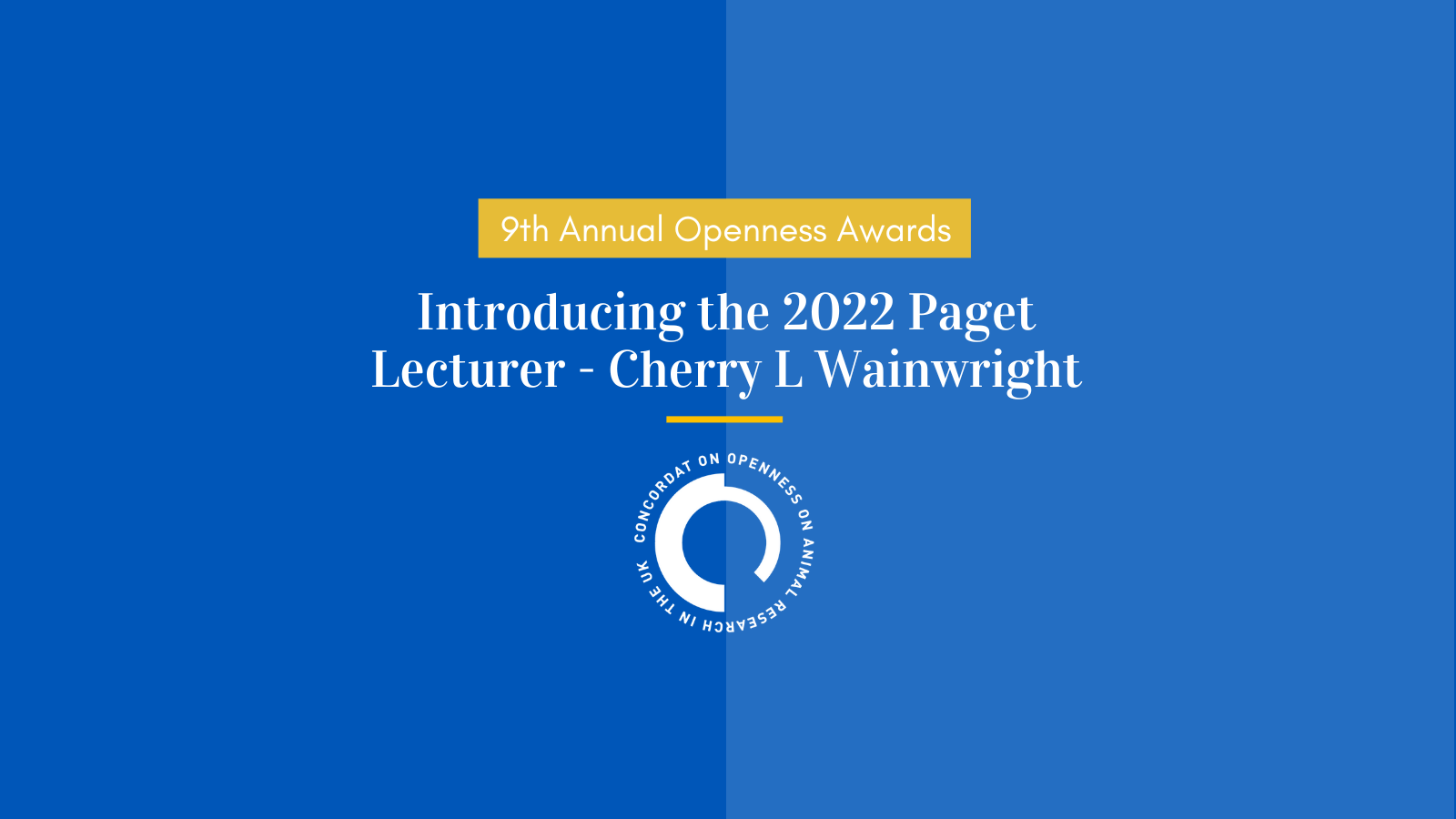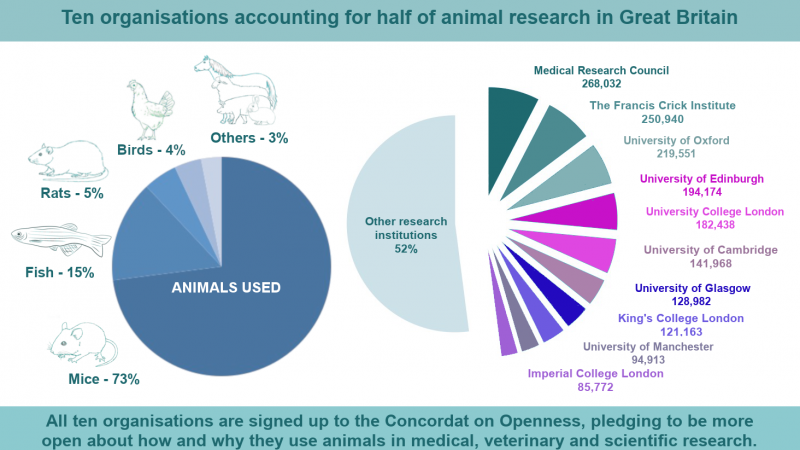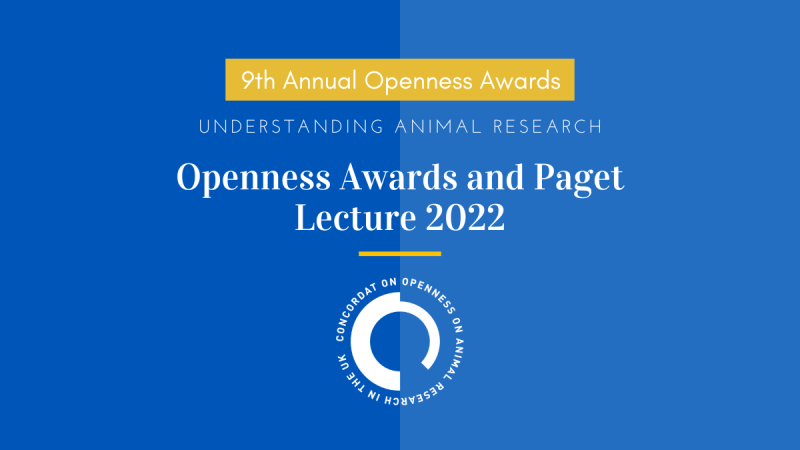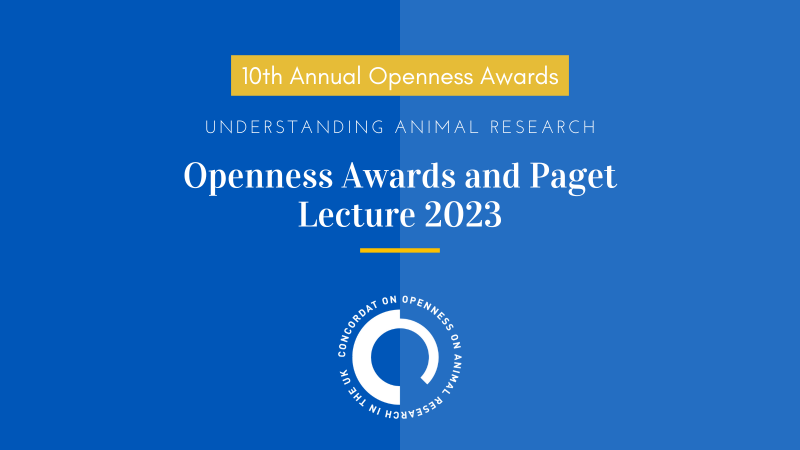
Researching heart disease with animals
Cherry L Wainwright is a research professor in the School of Pharmacy and Life Sciences at Robert Gordon University in Aberdeen. Her research focuses on cardiovascular disease, where she looks at the mechanisms underlying the pathophysiology of the disease and aims to identify novel therapeutic targets for treating cardiovascular diseases. Working with animals has been a component of her research throughout most of her career.
On Monday 5 December, Cherry will present the 85th Stephen Paget Memorial Lecture, "Getting to the Heart of the Matter: How animal research has helped us understand and treat cardiovascular disease".
The Paget Lecture is a scientific lecture that commemorates the life of Dr Stephen Paget (1855 - 1926), the founder of the Research Defence Society, a forerunner of Understanding Animal Research, and a medical doctor who believed passionately that better science and understanding of physiology would lead to better medical treatments.
For more information about the 2022 Openness Awards and Paget Lecture, including the winners and a summary of Cherry's lecture, read our latest article.
Before the lecture, UAR interviewed Cherry about her career
Cherry focuses on understanding the heart in detail, looking specifically at the mechanisms behind cardiac arrhythmia and myocardial injury, more commonly known as a heart attack.
During the first part of her journey as a heart scientist, the rat became Cherry’s model of choice. But working on these small rodents had physical and physiological limitations. The rat’s heart, although very useful for studying the electrophysiological response to the occlusion of a coronary artery and the damage that causes, doesn’t quite reflect human cardiac electrophysiology. The size of the animal can also be a problem. Some cardiovascular variables, like ventricular pressure and cardiac output, which are affected by heart attacks, can’t be measured easily in rodents.
For a few years, Cherry and her supervisor turned to greyhound dogs to measure these variables. She explains that the size of the model allowed them to apply drugs directly into the coronary circulation, measure blood coming out of the infarcted heart, which in turn allowed them to monitor quite a few extra parameters compared to the rat model.
“The work in dogs helped us demonstrate a very clear role of platelets in the genesis of arrythmias. It was quite an achievement. However, no one liked working with dogs, and changes in the animal scientific procedure act in the 1980s, made our work in dogs difficult. We took that opportunity to move to another large animal model, the pig, which turned out to be an excellent model.”
Pig cardiovascular physiology is very similar to that of a human in terms of their heart rate, the size of their heart, and the anatomy of the coronary circulation. Working with pigs, Cherry broadened her interest beyond cardiac arrythmias and cardiac injury. She became much more focused on the events that lead-up to a heart attack: the thickening of the coronary artery wall that can ultimately rupture the plaques leading to the formation of a thrombus followed by a heart attack.
By the early 90s, a lot of attention was given to the development of coronary stents. They were being inserted into the coronary arteries of patients who were having heart attacks. However, opening up the arteries carried its own set of problems, including changes (remodelling) in the blood vessels around the stent.
Cherry started working in the field of vascular stenosis, where balloon angioplasty and implantation of a stent into a blood vessel narrowed by fatty deposits, known as plaques, results in changes in the structure of the vessel wall causing it to narrow again (restenosis). She initially developed a rabbit model of restenosis using the subclavian artery, but gradually moved to studying the phenomenon in pigs as it was possible to target the coronary artery.
“Using dietary intervention with high cholesterol feeding in rabbits, we were able to mimic more closely what was happening in humans. By continuing our work in pigs we were able to insert stents into the coronary arteries. That work generated a lot of important information. For example, we were probably the first to really clearly show that inflammation was a major pathological event in the development of vascular remodelling in response to a stent. I was involved in several drug discovery projects that were aimed at trying to prevent that. We looked at various drug interventions that would help – and did help - with the vascular remodelling.”
Because of the different animal models Cherry had developed across the years, she worked hand in hand with the pharmaceutical industry throughout her career.
“They didn’t have the time or the facilities to establish and optimise these models, so I often worked closely with them as part of their drug discovery programs, looking at various interventions to see if they would ameliorate some of these changes.”
Throughout the 1990s, Cherry started working with a new animal; the mouse. The mouse and the human genome had been mapped. This gave scientists new opportunities to identify proteins involved in heart function and disease through genetic modification. Cherry studied atherosclerosis-prone mice and was able to demonstrate some interesting events that were happening during the development of an arteriosclerotic lesion both in terms the development of plaques but also the function of the endothelial cell wall and how that was becoming dysfunctional.
But a big shift was coming. In 2003, Cherry moved to Aberdeen, and to a university department that didn’t have any animal facility.
“So for a while I focused on trying to do some of the work I do in cell models. The use of cell models had become much more frequent in my field of research. I was able to identify certain mechanisms at play in the blood vessel wall or in the heart cells. But ultimately, because the vascular system is an integrated system that involves the nervous system, the heart and the blood vessels, it became clear I needed to work with whole organisms again.”
The university applied for an establishment license and Cherry got to work in mice again, understanding cardiovascular disease, the influence of diet, particularly high cholesterol, and the link to metabolic diseases like obesity or type 2 diabetes and how that impacts heart function. As part of that work, Cherry developed a non-mammalian in vivo model using the C. elegans nematode worm to find drugs that could prevent obesity development.
“This is a nice stepping-stone between cell-based work through to a whole organism, that helps us reduce the number of whole animal studies that we need to do.”
“My career is a forty year-long story working with animals. As time has gone by, we’ve refined a lot the way we work with animals. We use more alternative modelling techniques to minimise the use of animals as much as we can, but ultimately we still need to use whole animals. The cardiovascular system is fully integrated, and changes can affect the whole body, our work needs to reflect that, it can’t be taken out of context.”
Last edited: 10 January 2023 12:35



